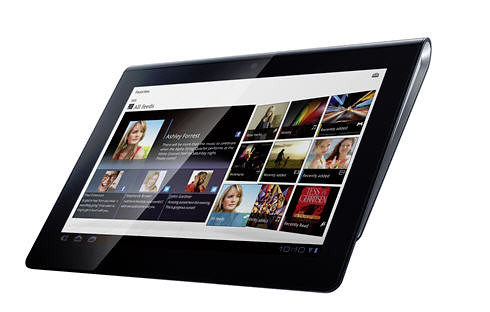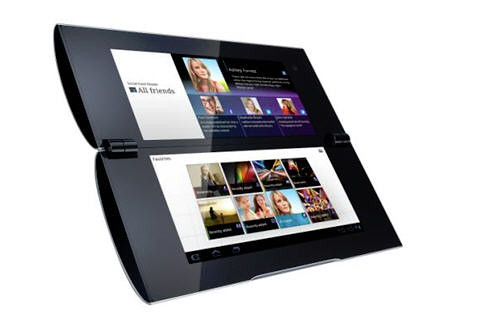Sony Tablet S and Tablet P

Sony's two tablets, the S and the P, have both been around for a while now. Both are quite different takes on the standard tablet fare, with the P being the one sitting furthest from the mainstream. I've been living with them for a few weeks.
Of the two devices, the Tablet S looks most like a standard tablet. There are various versions available, with Sony currently quoting £299 for a 16GB Wi-Fi version, £379 for the 32GB Wi-Fi version and £399 for the 16GB Wi-Fi+3G version. All have a 9.4in., 1,280-by-800-pixel screen, a 5-megapixel camera and run on a 1GHz dual-core Nvidia Tegra 2 processor with Android 3.2 as the operating system.
This all seems fairly normal stuff, but what makes the Sony Tablet S stand out is its physical design. Not content with producing a tablet with a flat profile, Sony opted for a more wedge-like approach, so that one long edge is much thicker than the other.

The wedge allows the Tablet S to sit on a desk at a slight angle, which makes it much easier to view content. This works best when using the device in landscape mode, because of the orientation of the wedge, but it's also effective in portrait orientation.
The Tablet S feels very comfortable held in one hand at the thick edge. If you keep the thick edge at the bottom when using the Tablet S in landscape mode it feels light and well-balanced — because the weight is mostly at its bottom edge and gravity does its job.

I don't want to stress these points too heavily, though. Some people will find the wedge irritating while others with really like it.
A neat touch is the addition of USB Host facilities, allowing you to attach a USB stick for storage. This sounds great, but Sony doesn't provide the required converter for the microUSB port.
It's a shame there's no HDMI port, but Sony has included DLNA and an innovative infrared utility that allows you use the Tablet S as a remote control for your TV and other home entertainment equipment. Plenty of manufacturers are supported, and if yours isn't you can configure it manually. The Android skinning and addition of extra apps to boost Android 3.2 is welcome. This is a PlayStation-certified tablet, so you can play old Playstation games if that's your thing.
The proprietary charging cable is an irritation. It's a bulky unit and will make charging on the go irritating. Overall, the Sony Tablet S doesn't tick all my boxes, but I'm pleased that Sony has toyed with the hardware design and moved away from the mainstream.
Sadly, I can't say the same about the Tablet P.
The Tablet P currently comes in just one version with Wi-Fi and 3G, 4GB of storage and the same 1GHz dual-core Nvidia Tegra 2 processor used on the Tablet S. It also runs on Android 3.2 and has a proprietary charging cable.
The Tablet P's defining characteristic is its clamshell design.

Two 5.5in., 1,024-by-480-pixel screens combine to give an large viewing area that's cut across the middle by a 9mm-thick swathe of black where the clamshell hinge is located.
Sometimes the two screens act independently — for example when you're typing a message with the keyboard on the lower screen and a text window on the upper screen, or when playing PlayStation games when the lower screen becomes the controller. On these occasions the split screen feels clever and useful.
But web pages are bisected, and sometimes that large strip of black even cuts through the middle of embedded video. In these situations the split screen is bizarre and unwelcome.

The Tablet P does close down into a smallish device for carrying around (it looks a bit like a bulky glasses case), but that alone is not enough to save it. Given that tablets are all about the screen, it seems bizarre that Sony has cut this device's screen in half . The Tablet P is an intriguing product, but I can think of many better ways to spend £399.
Sandra Vogel